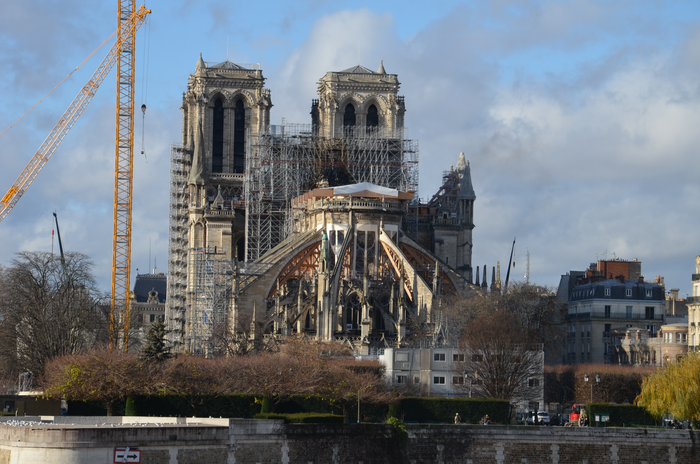Innovative Construction Technique Spotted in Notre Dame

In 2019, a fire broke out inside Notre Dame Cathedral in Paris, severely damaging the iconic medieval building. However, the catastrophic fire gave researchers an opportunity to study the building’s architecture like never before.
A few months after the inferno was extinguished, researchers discovered that the stones used to build the Gothic-style cathedral were held together using iron staples, a technique that had never been documented before in a building from this time period, according to a study published March 15 in the journal PLOS One.
Notre Dame was constructed in multiple phases starting in the early 12th century and continuing for the next 300 years, according to the Notre Dame Cathedral website.
“This is the first building of its kind in which we see this,” lead author Maxime L’Héritier, a professor in the Department of History at Paris 8 University, told Live Science. “This shows [that the builders] at the time were trying to experiment with new forms of construction.”
L’Héritier and his team analyzed 12 of the iron staples, which measure approximately 20 inches (50 centimeters) long and were part of the “iron skeleton” holding the building together, L’Héritier wrote in an essay for the archaeology publication Sapiens.
The staples offered additional reinforcements to the cathedral’s stonework, including holding together the large arches in the nave of the building’s towering 226-foot-tall (69 meters) twin towers.
Without the staples’ support, this architectural feat would likely have been impossible to accomplish in 1160, when construction of the building began, according to the study.
“When we studied other Gothic churches of that time period, none used iron in their construction,” L’Héritier said. “We believe that the staples were what enabled them to build this structure at such a terrific height.”
Researchers radiocarbon dated the iron staples and discovered that they were used during one of the initial construction phases, “confirming that the production date of the staples was the same as the masonry, which also dated to around 1160,” L’Héritier said.
However, L’Héritier cautioned that it will take further analysis to know the iron’s exact origins.
“We’re trying to figure out if it’s local or more distant,” L’Héritier said. “There also seems to be different ore sources depending on whether the construction occurred in the 12th or 13th centuries. We do know that the [cathedral’s] bishop died at the end of the 12th century, so it’s possible that a new ore resource was used years later. We should know more in a year or two.”
In the four years following the blaze, Notre Dame has been undergoing reconstruction and is expected to reopen to visitors in December 2024, according to AP News.
